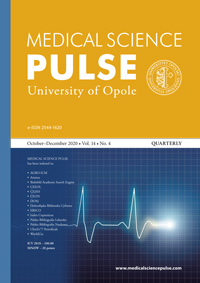The effectiveness of massage for treating acne lesions: a case study.
The effectiveness of massage for treating acne lesions: a case study.
Author(s): Szymon Suwiczak, Iwona Wilk, Krzysztof KassolikSubject(s): Health and medicine and law
Published by: Uniwersytet Opolski
Keywords: massage; acne lesions; keloid; mobility-shifting of the skin
Summary/Abstract: Background: Acne vulgaris is a chronic disease affecting almost 100% of the population. The treatment of this condition is not limited to the disease itself, but also involves eliminating the resultant scars. The most common treatments for acne and the associated scars are pharmacotherapy, cosmetic and physical therapy, and aesthetic medicine therapies. An alternative method for treating this condition may be massage, which, as a mechanical stimulus, may be effective at increasing scar mobility and reducing the pain experienced during movement. Aim of the study: The aim of this case study was to examine the effectiveness of massage for treating the scars resulting from keloid acne. Material and methods: Massage treatments were performed on a young man (32 years old) who, as a result of acne, had scars on the chest and back areas. Massage was performed twice a week for 3 weeks (6 treatments), and each session lasted 40 minutes. Before the therapy, the VAS scale was used to assess the perceived pain, and palpation was used to assess the consistency (hardness) of the post-acne lesions. Skin displacement was measured with the use of an innovative device allowing for determination of the angle of displacement of the superficial skin layer within the scar. A questionnaire was also used to assess well-being and quality of life. The measurements were repeated after each session and immediately after the end of the massage cycle. Results: After a series of massages, the experienced pain, as assessed by the VAS scale, was reduced from level 5 before therapy to level 1 after therapy. Skin mobility was also increased by the massage treatments, and the patient’s well-being and quality of life improved after each session. Conclusions: The presented case shows that massage can be used in the treatment of post-acne lesions. This therapy can support the conventional treatment process by contributing to a reduction in pain, increasing the limited mobility and displacement of the scarred skin, and improving overall well-being and quality of life.
Journal: Medical Science Pulse
- Issue Year: 15/2021
- Issue No: 2
- Page Range: 52-59
- Page Count: 8
- Language: English

